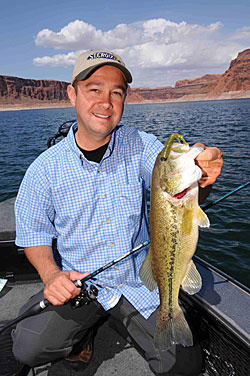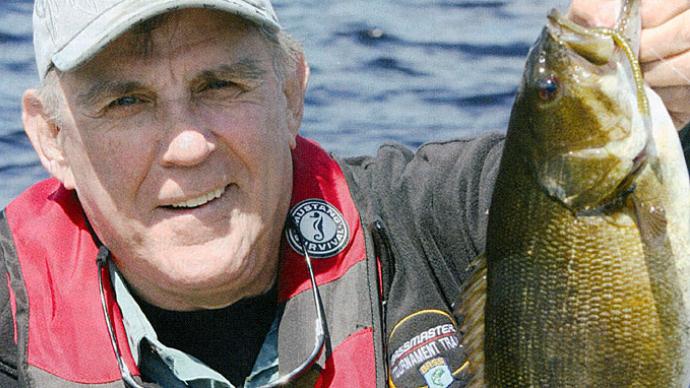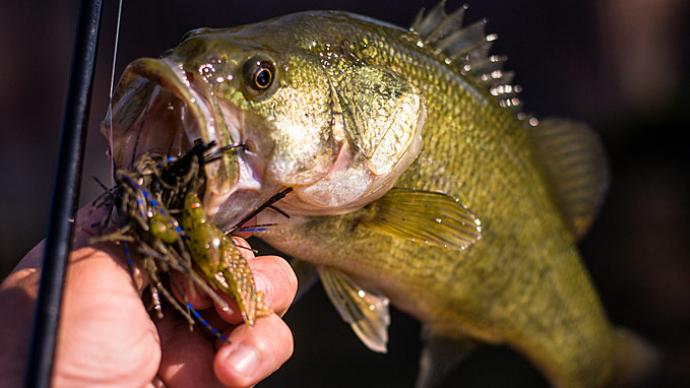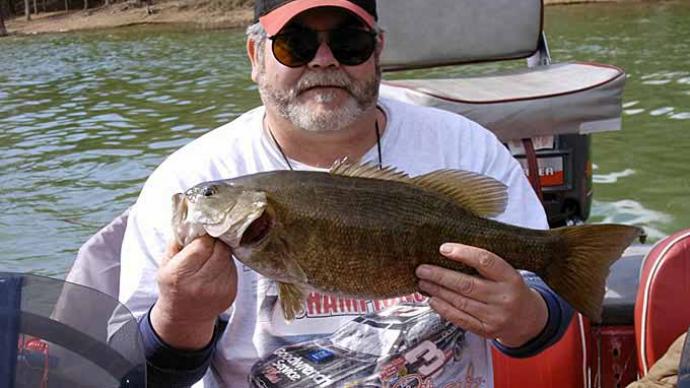
Manipulation of fish spawning is an often-used concept by pond owners — from the hatcheries that produce advanced sized fingerlings to pond owners who use the technique to help control fish populations to meet goals. The more we understand how spawning works and how to use the info to meet our goals the better we can manage our waters. A new study titled Out-of-Season Spawning Method for Florida Largemouth Bass to Produce Advanced-Sized Fingerlings by Early Spring by Michael D. Matthews and Richard B. Stout North American Journal of Aquaculture 75:524-531, 2013, American Fisheries Society 2013, DOI: 10.1080/15222055.2013.824943 contains some novel ideas and a wealth of largemouth bass spawning information. Much of this wealth of information and the concepts are applicable to other species such as bluegill and redear sunfish and others as well.
One of the concepts used in this study was the use of "out-of-season spawning", "OS" herein.
The concept (as discussed): To bring the fish into spawning mode using hormones or through the manipulation of water temperature and photoperiod (day/light length). It is the manipulation of temperature and photoperiod that this study uses to produce advanced sized largemouth bass fingerlings for stocking in early spring. A review of the Pond Boss Forum will show a number of people using an RAS (indoor) system to accomplish this with several species.
Bass typically spawn in early spring into the summer, with some latitude variation between northern and southern regions. Culturists began development of new spawning and rearing methods because of the demand for greater numbers and larger-sized individuals for stocking. The often-encountered market-based problem is lack of advanced size fingerlings at the right time (early spring) when they have the best chance for survival. There is often the same demand for large fingerlings of bluegill, trout, yellow perch, redear sunfish, and tilapia as well as others.
For most pond species, a time frame of short photoperiod and cool water temps are needed to start or reset the reproductive cycle. The thought and practice is where photoperiod and temperature are manipulated in an effort to simulate daylight and temperatures experienced during a typical winter in an effort to induce an indoor fall spawn.
In this test, brood stock was required to be wild caught, (F1 pellet or forage-reared brood stock were strictly prohibited) for genetics purposes addressing the loss of genetic variability.
The OS manipulation procedure began each year on approximately June 18 and was completed by September 20. The goal was to simulate winter-spring temperatures and day length over a 90 day period to naturally induce spawning and produce 100 mm+- (4 inch) fingerlings by March for stocking.
One interesting note was that bass reared intensively in raceways on formulated diets survived at greater percentages compared to similar-sized bass pond-reared on fathead minnows when transferred to ponds, in the absence of large predators. Therefore stocking larger-sized bass should increase survival based on reduced predation vulnerability and increased prey availability.
Prior post-stocking evaluations found that advanced-sized, pellet-reared hatchery fish stocked on top of age-0 natural populations of similar- size fish experienced high initial stocking mortality. Some studies reported a significantly higher frequency of empty bass stomachs 7 days post stocking, revealing an early inability to transition to natural prey as consequently contributing to reduced survival. Additional advanced fingerling evaluations showed minimal gain when stocking 55, 100, 150, and 200 mm fish against similar-sized wild bass.
In this study water temperature was slowly reduced from ambient temperatures at a rate of 1-2°C (1.8 -3.6 F) every 2 to 3 days over a 4-week period until water temperatures reach 10—12°C. (50 - 53.6 F). Broodstock were held at 10—12°C (50 - 53.6 F) for approximately 3 to 4 weeks. The sequence was then reversed and water temperatures increased 1-2°C (1.8 -3.6 F) every 2 to 3 days over a 4-week period to ambient temperatures
Concurrent with chilling the brood fish, day length was manipulated to exaggerate shorter daylight periods experienced in winter. Each raceway was covered with a single sheet of black plastic to exclude all ambient light. Exaggerated shortened day lengths and complete darkness was crucial to manipulating fish to spawn without hormone injection. Initially, raceways had a 10 hour photoperiod for the first 4 weeks, dropping to an 8 hour photoperiod during the 3 to 4 weeks spent at 10-12°C (50 - 53.6 F) . Photoperiod was increased to 10 hours for 2 weeks and then increased to 14 hours for the last 2 weeks of conditioning through the end of the spawning period.
All spawns collected in the 2009-2011 OS events were products of afternoon and night spawning. The 14 hour light phase began at 0600 hours. No spawning activity was observed between 0600 and 1200 hours. Males displayed courtship behavior as early as 1200 hours after selecting a spawning mat and continued until attracting a female or "dark" out at 2000 hours. Individual courtship and spawning time and duration varied. This study data agrees with afternoon and evening spring spawning occurring in the wild and in raceways.
Spawning OS (2009-2011) yielded 7,264; 13,132; and 4,781 fry per female, respectively. Amounts were comparable to reports of 4,680-18,510 eggs per female and fecundity ranges generally established for largemouth bass. Mean OS fry per spawn values (4,000-7,000) were lower than spring production totals that averaged 6,000-12,000 fry per spawn. The difference between OS and spring in fry per spawn was observed in 2 of the 3 years. Spring production of Florida largemouth bass at the Texas Freshwater Fisheries Center reported similar numbers of fry per spawn (8,000-12,000).
These reports show that bass spawned both naturally or offseason have a unimodal GSI (reproductive) peak, suggesting a distinct annual reproduction cycle. Evidence of a forced secondary bimodal GSI peak that showed gonad development again during the 90 day photothermal manipulation period could help resolve the issue of reduced numbers of fry collected per spawn in the fall or may suggest bass that do not spawn in the spring spawn out of season.
One problematic part of this concept is the required warm fall climate which allows for rearing bass fry in fertilized outside ponds utilizing zooplankton. Application of this OS spawning technique may be limited to certain geographic locations due to negative effects of lower ambient water temperature extremes. However on a small scale some Pond Boss enthusiasts are using feeding methods to work around this problem.
Well that is a lot of bass spawning facts, info, and concepts to digest. Knowledge about photoperiod, temps, and numbers and how it all fits together is a key pond management concept.
Yes we can, in the right circumstances, manipulate spawning to meet goals like producing advanced fingerlings for stocking at the right time to enhance survival. Knowing about these concepts provides an additional benefit in that it gives you the factors to look for to judge if you are going to have a successful or an aborted spawn due to one or more of those conditions happening naturally. For example a late season cold snap during the spawn. Either a missing or an unusually large year class of bass can cause problems. Now you are armed to watch and apply the bass spawning factors noted to help meet goals and avoid problems.
Reprinted with permission from Pond Boss Magazine



